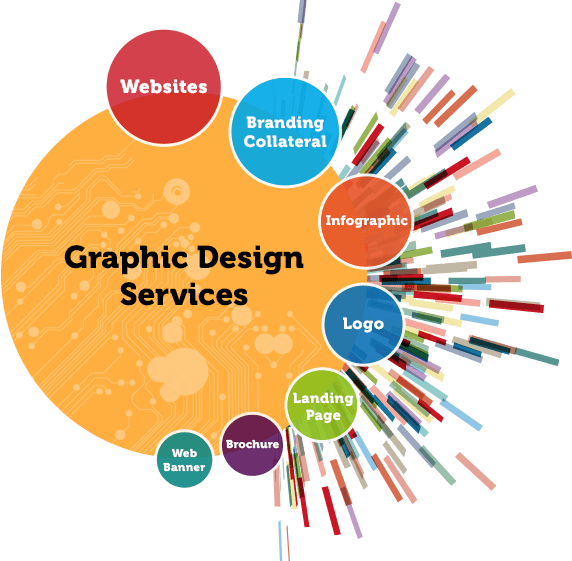In the digital age, content is king. From blogs and social media posts to videos and podcasts, the internet is awash with content vying for our attention. But in a sea of information, how does one stand out? The answer lies in mastering this art. Content creation has become a cornerstone of modern communication, influencing everything from personal blogs to multinational marketing strategies. Likewise, in an era where information is at our fingertips, the ability to craft compelling, engaging, and meaningful content is a skill that sets individuals and businesses apart.
Moreover, this has evolved into an essential component of digital marketing, education, entertainment, and personal branding. In today’s interconnected world, creating compelling content is a skill that can propel individuals and businesses to new heights. Whether you’re a seasoned marketer, a budding influencer, or a small business owner, understanding how to create engaging and effective content is crucial.
This blog explores the art of creating magic, examining its various facets from conceptualization to execution. Moreover, it offers insights on how to master this essential craft.
Understanding the Essence of Content Creation
At its core, content creation is about storytelling. Whether you’re writing a blog post, recording a podcast, producing a video, or designing an infographic. The objective is to tell a story that resonates with your audience. This story could be informative, entertaining, persuasive, or a combination of these elements. The key is to understand your audience and tailor your content to meet their needs and interests.
It is both an art and a science, requiring creativity to generate compelling content and analytical skills. This helps to not only measure its impact but also refine strategies. Successful content creators blend these elements to produce material that not only captures attention but also builds lasting relationships with their audience.

Understanding Your Audience
The foundation of effective creation is a deep understanding of your target audience. Who are they? What are their interests, needs, and pain points? Creating audience personas can be incredibly useful in this regard. These personas represent your ideal audience members, detailing their demographics, behavior patterns, motivations, and goals.
However, to gather this information, consider conducting surveys, analyzing website analytics, and engaging with your audience on social media. Likewise, understanding your audience ensures that your content resonates with them, addresses their needs, and ultimately drives engagement and conversions.

Crafting a Compelling Narrative
Storytelling is a powerful tool that can captivate your audience, making your narrative memorable and relatable. Whether you’re sharing a personal anecdote, illustrating a customer’s journey, or explaining a complex concept, a well-structured narrative can significantly enhance the impact of your delivered piece.
A compelling narrative typically follows a basic structure: the introduction, the conflict or challenge, the resolution, and the conclusion. This structure can be adapted to fit various formats, from blog posts and articles to videos and podcasts. Hence, the key is to make sure your story is engaging, relevant, and provides value to your audience.

Quality Over Quantity
In the race to produce more content, it’s easy to fall into the trap of prioritizing quantity over quality. However, high-quality is more likely to stand out in a crowded digital landscape, garnering attention and fostering trust with your audience.
Likewise, high-quality content is well-researched, accurate, and offers unique insights or perspectives. It’s free from errors, well-formatted, and visually appealing. Thus, investing time and resources into creating fewer but higher-quality pieces can yield better long-term results than churning out a large volume of mediocre content.

Visual Content Appeal and Design
In an era where attention spans are dwindling, the visual appeal of your content can make a significant difference. Whether it’s a blog post, an infographic, or a social media update, incorporating eye-catching visuals can enhance engagement and shareability.
Design elements such as color schemes, typography, and layout play a crucial role in how your content is perceived. Tools like Canva, Adobe Spark, and even basic design principles can help you create visually appealing content that captures your audience’s attention.
For videos, consider investing in good lighting, clear audio, and professional editing to ensure your content looks polished and professional. Remember, first impressions matter, and the visual quality of your content is often the first thing your audience notices.

SEO and Content Distribution
Creating great content is only half the battle; getting it in front of the right audience is equally important. Search engine optimization (SEO) is a crucial aspect of content distribution, helping your content rank higher in search engine results and attract organic traffic.
Effective SEO involves keyword research, optimizing on-page elements (such as titles, headings, and meta descriptions), and building high-quality backlinks. Tools like Google Analytics, SEMrush, and Ahrefs can provide valuable insights into your SEO performance and help you refine your strategy.
In addition to SEO, consider leveraging social media platforms, email newsletters, and collaborations with influencers or other brands to distribute your content. The goal is to maximize your content’s reach and ensure it gets seen by as many people as possible.

Consistency and Authenticity
Consistency is key to building a loyal audience. This means posting regularly, maintaining a consistent brand voice, and delivering on the promises you make through your content. Whether it’s a weekly blog post, a daily social media update, or a monthly video, sticking to a consistent schedule helps establish trust and keeps your audience engaged.
Authenticity is equally important. In an age where consumers are increasingly skeptical of overly polished or insincere content, being genuine and transparent can set you apart. Share your successes and failures, be honest about your experiences, and don’t be afraid to show the human side of your brand. Therefore, authentic pieces resonates more deeply with audiences and fosters a stronger connection.
Engaging with Your Audience
Content creation is not a one-way street. Engaging with your audience and fostering a sense of community can greatly enhance the impact of your content. Respond to comments, ask for feedback, and encourage discussions to create a more interactive and engaging experience.
User-generated content (UGC) is another powerful way to involve your audience. Encourage your followers to share their own content related to your brand, whether it’s a testimonial, a photo, or a review. UGC not only provides you with valuable content but also helps build a sense of community and trust.

Utilizing Analytics and Feedback For Content Improvement
To continually improve your content strategy, it’s essential to track your performance and gather feedback. Analytics tools can provide insights into various metrics such as page views, engagement rates, and conversion rates, helping you understand what’s working and what’s not.
Regularly reviewing this data allows you to make informed decisions and adjust your strategy accordingly. Additionally, actively seeking feedback from your audience can provide valuable insights into their preferences and expectations, guiding your future content creation efforts.

Experimentation and Innovation
The digital landscape is constantly evolving, and staying ahead requires a willingness to experiment and innovate. Don’t be afraid to try new formats, platforms, or content types. Whether it’s exploring the latest social media trend, launching a podcast, or experimenting with interactive narrations, staying adaptable and open to new ideas can keep your content fresh and engaging.
Remember that not every experiment will be successful, and that’s okay. The key is to learn from your experiences, iterate on your approach, and continually seek out new opportunities to connect with your audience.

Leveraging Tools and Technology For Content Creation
There are numerous tools and technologies available that can streamline the process and enhance your output. Here are a few categories of tools that can be particularly useful:
Planning and Management
Tools like Trello, Asana, and CoSchedule can help you plan, organize, and manage your content calendar. These tools enable you to track deadlines, collaborate with team members, and ensure a steady flow.
Content Writing and Editing
For writing and editing, platforms like Grammarly, Hemingway, and Google Docs can enhance your writing process. Grammarly helps with grammar and spelling, while Hemingway focuses on readability and clarity. Google Docs offers robust collaboration features for team projects.
Graphic Design and Video Editing
Canva and Adobe Spark are excellent for creating stunning graphics without needing advanced design skills. For video editing, tools like Adobe Premiere Pro, Final Cut Pro, and even simpler options like iMovie can help you produce professional-quality videos.
SEO and Analytics
SEO tools like SEMrush, Ahrefs, and Moz can help you optimize your content for search engines and track your performance. Google Analytics is essential for monitoring website traffic and understanding user behavior.
Social Media Management
Buffer, Hootsuite, and Sprout Social are great for managing your social media presence. These tools allow you to schedule posts, monitor engagement, and analyze performance across multiple platforms.

Conclusion
The art of content creation is a dynamic and multifaceted discipline that requires a combination of creativity, strategy, and technical skills. By understanding your audience, crafting compelling narratives, prioritizing quality, and leveraging the right tools, you can create content that not only captivates your audience but also drives meaningful results for your brand.
Remember that content creation is an ongoing process of learning and adaptation. Stay curious, keep experimenting, and always strive to provide value to your audience. In doing so, you’ll not only master the art but also build a strong and engaged community around your brand.